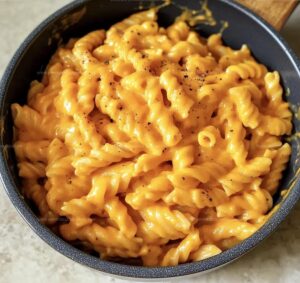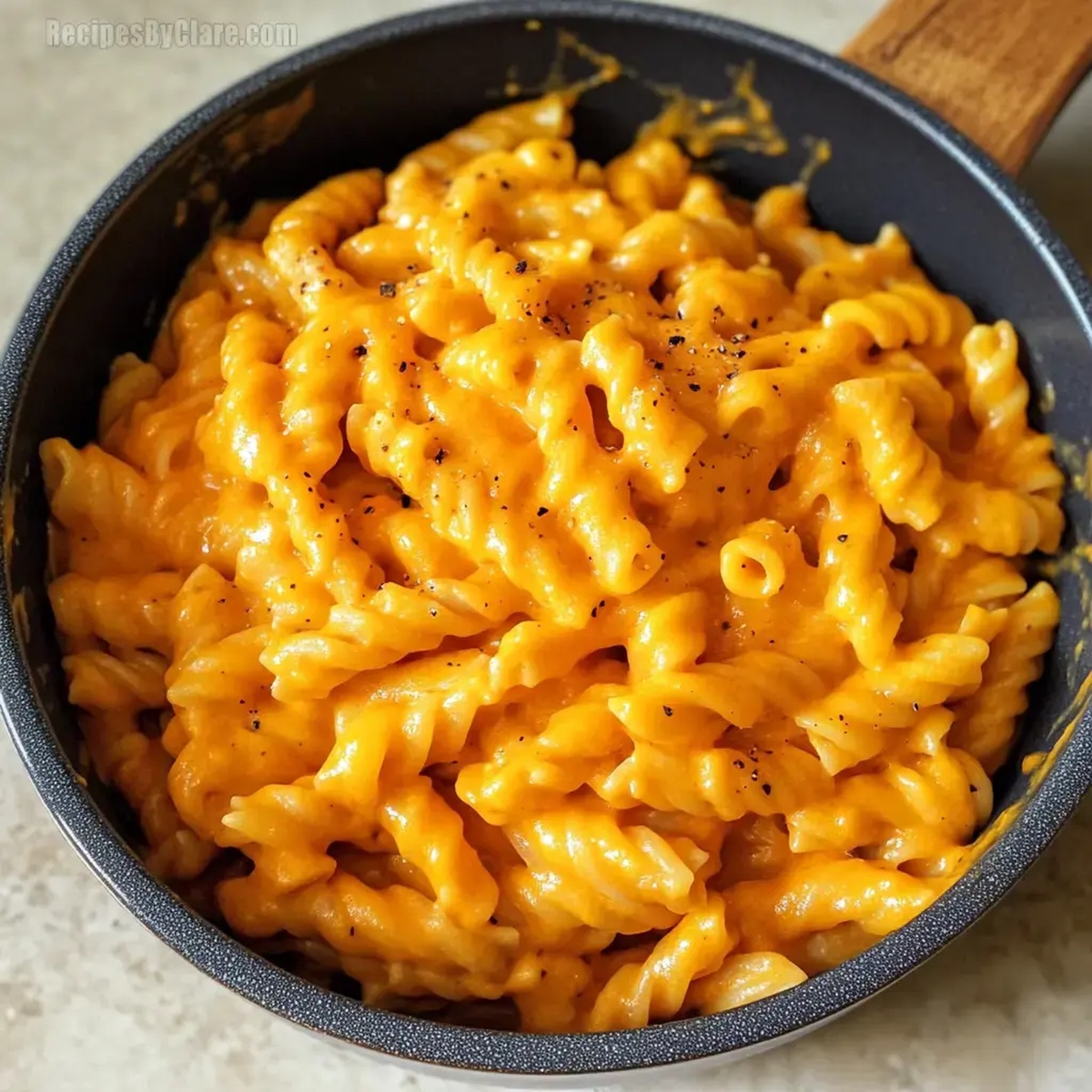Luscious Creamy Butternut Squash Pasta Sauce Recipe for Fall
Chefs adore this creamy butternut squash pasta sauce that transforms simple ingredients into a luxurious culinary experience.
Vibrant orange hues promise incredible flavor and nutrition packed into every delightful bite.
Seasonal vegetables create magic when blended with smooth, velvety textures that dance across your palate.
Warm spices complement the natural sweetness of roasted butternut squash, building layers of complex taste.
Comfort meets elegance in this sophisticated yet approachable recipe perfect for cozy evenings.
Minimal preparation meets maximum satisfaction, ensuring you can craft restaurant-quality magic right in your kitchen.
Dive into this soul-warming dish that will become your new favorite autumn comfort food.
Gathering Ingredients for Butternut Squash Pasta Sauce
Main Ingredients:Seasonings and Aromatics:Optional Toppings:Instructions for Creamy Butternut Squash Pasta Sauce
Step 1: Prep Oven and Baking Sheet
Set your oven to a toasty 450F and line a baking sheet with parchment paper to prevent sticking and make cleanup a breeze.
Step 2: Arrange Colorful Vegetables
Spread out butternut squash, juicy tomatoes, and sweet yellow onions across the baking sheet.
Generously drizzle with olive oil and sprinkle with salt, black pepper, and aromatic dried thyme.
Gently toss everything to ensure each piece gets a delicious coating.
Step 3: Roast to Golden Perfection
Pop the baking sheet into the hot oven and let the vegetables roast for 20 minutes.
You’re looking for tender, slightly caramelized edges that bring out deep, rich flavors.
Step 4: Cook Pasta to Al Dente
While the vegetables are transforming in the oven, cook your pasta until it reaches that perfect al dente texture.
Before draining, carefully scoop out a portion of pasta water – this liquid gold will help create a silky sauce.
Step 5: Create Velvety Sauce
Transfer the roasted vegetables to a blender.
Add the reserved pasta water and blend until you achieve a smooth, creamy consistency that looks absolutely irresistible.
Step 6: Marry Pasta and Sauce
Gently toss the freshly blended sauce with the cooked pasta, ensuring every strand gets a luxurious coating.
Finish with a sprinkle of grated parmesan or a plant-based cheese alternative for an extra touch of deliciousness.
Butternut Squash Pasta Tips for Smooth, Velvety Results
New Butternut Squash Pasta Sauce Flavor Variations
Ways to Plate Butternut Squash Pasta with Style
Refrigeration Tips for Butternut Squash Pasta Sauce Leftovers
FAQs
The roasting process intensifies the vegetables’ natural sweetness and creates a deeper, more complex flavor profile compared to traditional simmered sauces.
Yes, by using a plant-based parmesan alternative, this recipe can easily become fully vegan-friendly while maintaining delicious taste and creamy texture.
Fresh butternut squash is recommended for best results, but frozen squash can work if thawed completely and patted dry to prevent excess moisture during roasting.
Medium-sized pasta shapes like penne, rigatoni, or farfalle are ideal as they help capture and hold the creamy sauce effectively.
Creamy Butternut Squash Pasta Sauce for Fall Pasta Nights
Print
Creamy Butternut Squash Pasta Sauce Recipe
- Total Time: 35 minutes
- Yield: 4 1x
Description
Butternut squash pasta sauce brings Italian comfort to North American kitchens with velvety, aromatic richness. Hearty ingredients blend seamlessly, delivering a luxurious meal you can savor with friends and family.
Ingredients
Main Ingredients:
- 16 ounces (454 grams) frozen diced butternut squash
- 1.5 cups fresh chopped tomatoes
- 1 pound (454 grams) pasta
Aromatics and Seasonings:
- 1/2 yellow onion
- 2 tablespoons olive oil
- 1 teaspoon salt
- 1/4 teaspoon black pepper
- 1/2 teaspoon dried thyme
Liquid:
- 1/3 cup pasta water (reserved)
Instructions
- Heat the oven to 450F and cover a baking sheet with parchment paper, ensuring complete surface coverage.
- Distribute butternut squash, tomatoes, and onion across the baking sheet, ensuring even spacing. Drizzle with olive oil and sprinkle salt, black pepper, and dried thyme, massaging ingredients to achieve uniform coating.
- Place the vegetable-laden sheet into the preheated oven, roasting for 20 minutes until edges caramelize and vegetables soften, developing rich, concentrated flavors.
- During vegetable roasting, prepare pasta in boiling water according to package guidelines. Before draining, extract 1/3 cup of starchy cooking liquid, which will help emulsify the sauce.
- Transfer roasted vegetables to a blender, incorporating reserved pasta water. Pulse and blend until achieving a silky, uniform consistency with no visible chunks.
- Gently fold the creamy sauce into cooked pasta, ensuring each strand gets thoroughly coated. Garnish with freshly grated parmesan or plant-based cheese alternative for enhanced flavor profile.
- Serve immediately while sauce remains warm and pasta retains optimal texture, presenting a comforting, vibrant dish.
Notes
- Enhance flavor by adding a sprinkle of smoked paprika or chili flakes to the roasted vegetables for a subtle kick.
- Ensure smooth blending by letting roasted vegetables cool slightly before processing to prevent steam buildup in the blender.
- Create a dairy-free version by using nutritional yeast instead of parmesan cheese, which adds a nutty, cheesy flavor for plant-based diets.
- Boost protein content by stirring in white beans or cooked chickpeas directly into the sauce for a more nutritious meal.
- Prep Time: 15 minutes
- Cook Time: 20 minutes
- Category: Dinner, Lunch
- Method: Roasting
- Cuisine: Italian
Nutrition
- Serving Size: 4
- Calories: 457 kcal
- Sugar: 4 g
- Sodium: 600 mg
- Fat: 7 g
- Saturated Fat: 1 g
- Unsaturated Fat: 6 g
- Trans Fat: 0 g
- Carbohydrates: 88 g
- Fiber: 7 g
- Protein: 14 g
- Cholesterol: 0 mg



Nathaniel Brooks
Founder & Recipe Developer
Expertise
Farm-to-table cuisine, Seasonal recipe development, Culinary storytelling
Education
Ivy Tech Community College – Indianapolis, IN
Culinary Arts / Hospitality Administration & Events
Focused on hands-on training in classical and modern culinary techniques.
Nathaniel’s story starts in the foothills of the Appalachian Mountains, where farm stands, backyard gardens, and old family recipes shaped his love for real food. After graduating from Ivy Tech Community College in Indianapolis, he spent years working in farm-to-table kitchens, learning how to turn local, seasonal ingredients into something memorable.
Today, Nathaniel pours that same spirit into every single recipe on Aspiring Culinarian – recipes that feel real, comforting, and connected to the land. When he’s not in the kitchen, you’ll find him foraging wild herbs, chasing sunsets with his camera, or writing about the flavors that shaped his roots.